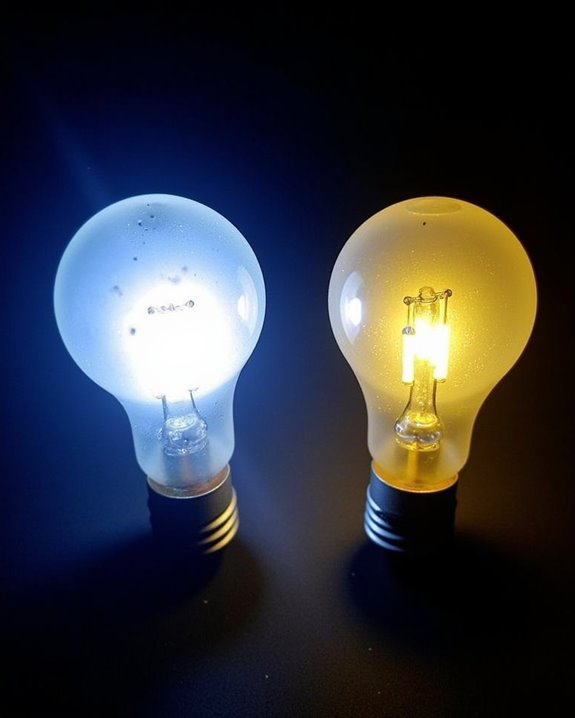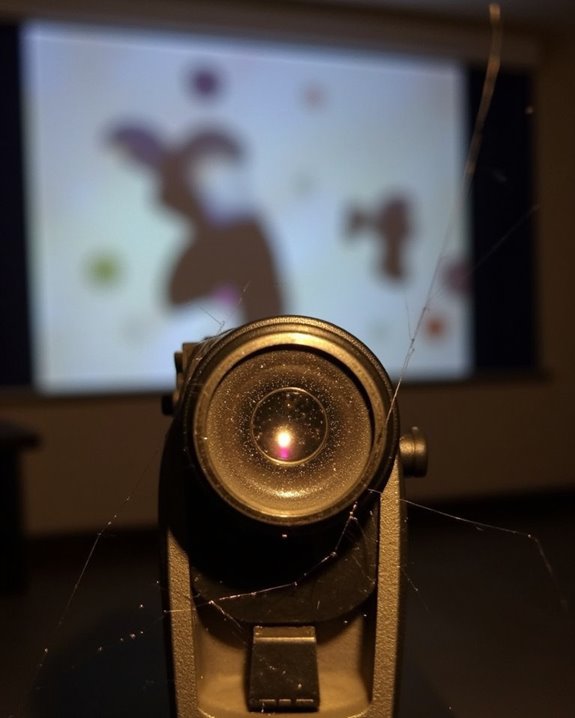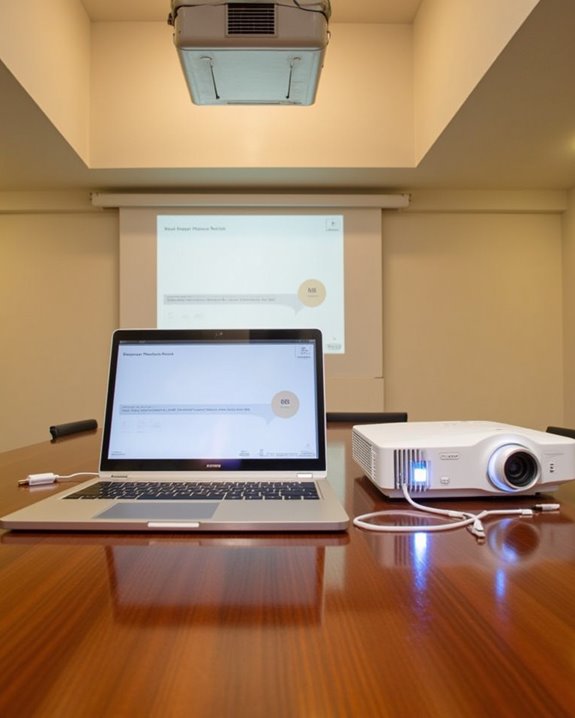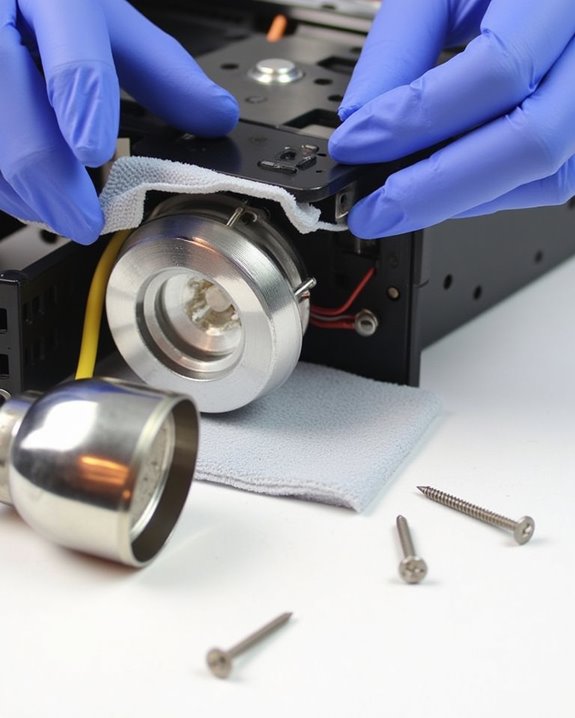Every projector owner’s worst nightmare is having the bulb die during the climax of a movie night. You’ve probably wondered how long your projector bulb will actually last before needing replacement. The answer varies dramatically depending on whether you’re using traditional UHP lamps (2,000-5,000 hours) or newer LED/laser technology (up to 50,000 hours). Understanding your projector’s specific technology, usage patterns, and maintenance requirements can help you predict when you’ll face that inevitable replacement decision—and potentially save thousands in unexpected costs.
Key Takeaways
- Traditional UHP/UHM projector bulbs typically last between 2,000 and 5,000 hours of operation.
- LED and laser technologies offer significantly longer lifespans, ranging from 20,000 to 50,000 hours.
- Using eco mode can extend bulb life by reducing heat and power consumption.
- Halogen bulbs have the shortest lifespan at only 40-70 hours of projection time.
- Environmental factors like temperature, dust, and power stability directly impact bulb longevity.
The Average Lifespan of Different Projector Bulb Types
The lifespan of a projector bulb is a critical factor to contemplate when you’re purchasing a new projector or planning for replacement costs. Different bulb technologies offer varying longevity, with traditional UHP and UHM bulbs typically lasting between 2,000 and 5,000 hours while maintaining acceptable brightness levels and color accuracy throughout most of their lifespan.
For those seeking longer-lasting options, LED and laser technologies markedly outperform conventional bulbs, offering 20,000 to 50,000 hours of projection time. These advanced options not only reduce replacement frequency but also maintain superior color accuracy over time. Halogen bulbs, while affordable, require frequent replacement due to their brief 40-70 hour lifespan. Your usage patterns will ultimately determine which technology represents the most practical investment, with eco-modes potentially extending bulb life regardless of type. Additionally, factors such as brightness levels and usage environment can influence the actual longevity and performance of projector bulbs.
Factors That Affect Projector Bulb Longevity
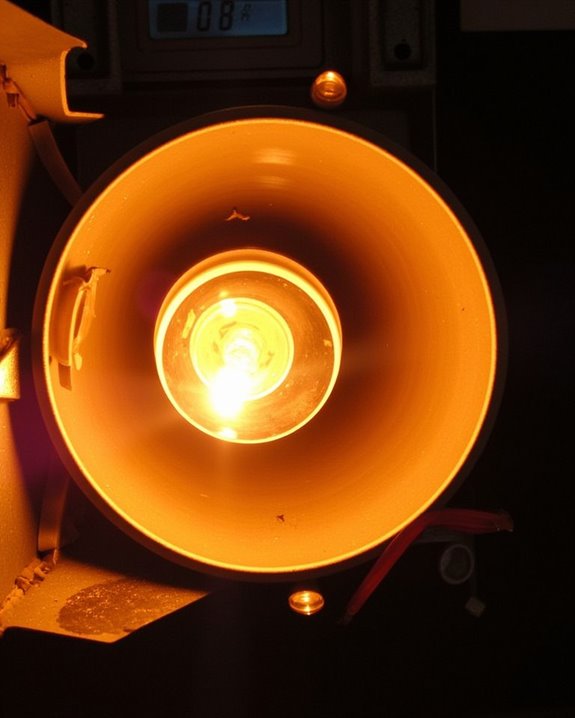
While your projector bulb’s advertised lifespan provides a baseline expectation, numerous factors substantially impact how long it’ll actually last in real-world conditions. The lamp type significantly influences longevity, with LED and laser models lasting 5-10 times longer than traditional UHP bulbs.
Your usage patterns directly affect durability, as operating in high brightness modes reduces lifespan compared to eco settings. Environmental conditions, particularly temperature and dust accumulation, can dramatically shorten bulb life without proper ventilation. Brand reputation matters too, as high-quality manufacturers typically engineer bulbs with superior components and better color accuracy.
Power stability also plays a vital role, with voltage fluctuations potentially damaging bulbs prematurely. Regular maintenance, including filter cleaning and ensuring adequate airflow, will help maximize your investment regardless of which bulb technology you’ve chosen. Additionally, proper projector placement can optimize image quality while helping maintain bulb longevity by preventing overheating and ensuring efficient operation.
Signs Your Projector Bulb Needs Replacement
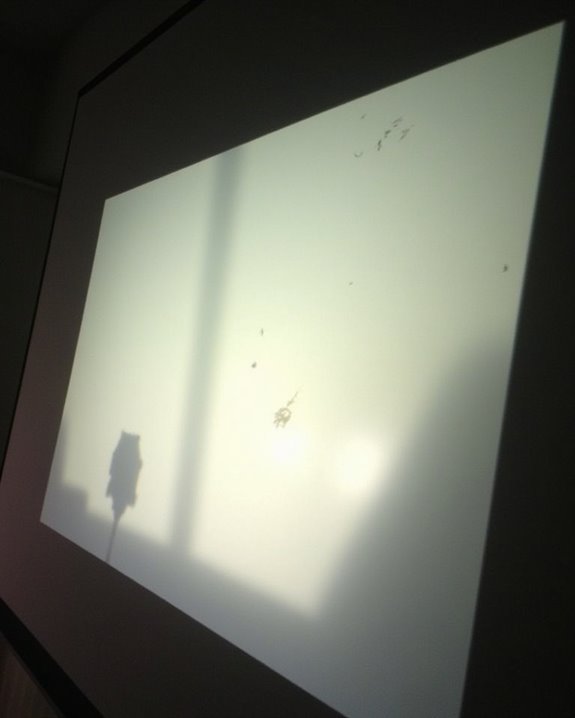
Recognizing when your projector bulb is failing can save you from unexpected interruptions during important presentations or movie nights, as several telltale indicators will emerge before complete failure occurs. You might notice your screen resolution appearing less crisp, with dimming or flickering that gradually worsens over time, making color calibration increasingly difficult. Watch for horizontal or vertical lines appearing across your display, accompanied by audible popping or buzzing sounds when operating the projector.
Pay attention to warning indicators, such as yellow or red flashing lights on your device or on-screen alerts indicating lamp replacement is needed. Startup issues, including delayed image projection or intermittent shutdowns, typically suggest your bulb is reaching the end of its operational life and should be replaced promptly. Proper maintenance and operating conditions can significantly affect the lifespan and maintenance of projector bulbs, helping to extend their effective usage.
Tips to Extend Your Projector Bulb’s Life
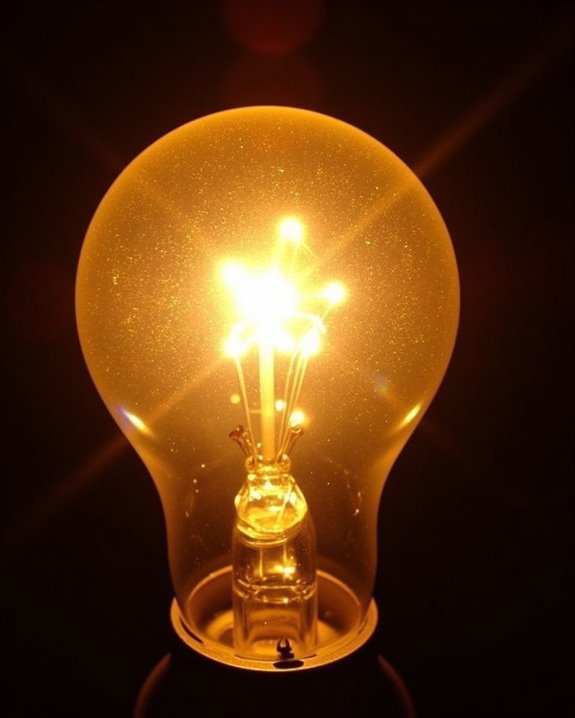
Extending your projector bulb’s lifespan requires proactive maintenance and thoughtful usage habits, which can potentially double or triple the operational hours you’ll get from each lamp. Switch to eco mode whenever maximum brightness isn’t necessary, as this reduces heat generation while maintaining acceptable color accuracy for most viewing scenarios. Keep air filters clean and ensure proper ventilation to prevent overheating, which not only preserves bulb life but also maintains consistent image resolution over time.
Use manufacturer-recommended replacement lamps instead of generic alternatives, as premium bulbs support ideal performance specifications. Allow your projector to cool down completely before moving or storing it, and monitor usage hours to anticipate replacement needs. Operating your device in moderate room temperatures and dust-free environments will greatly maximize your investment in projection technology.
Cost Comparison: Replacing vs. Upgrading Projector Technology
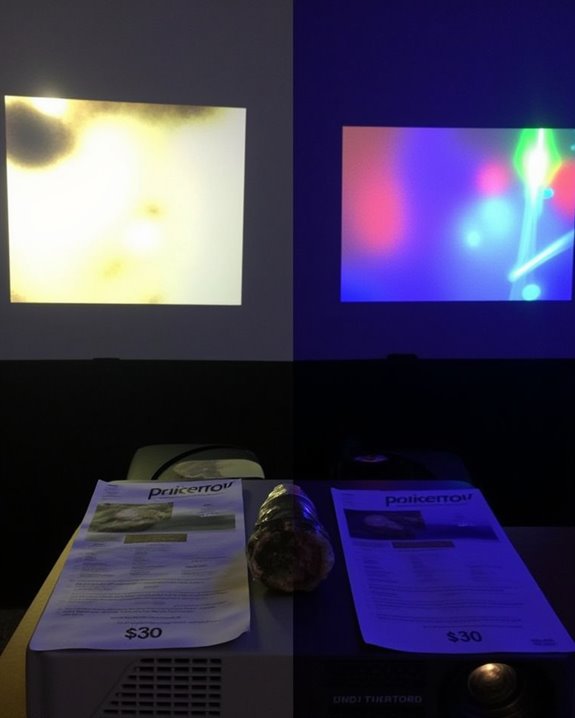
Beyond maintaining your projector bulb’s lifespan, you’ll eventually face a critical financial decision: whether to replace the bulb or upgrade your entire projector system. Traditional bulbs cost between $300-$400 and typically last 2,000-5,000 hours, making replacement a significant recurring expense.
When evaluating your options, consider the energy savings newer models offer. Modern projectors often feature bulbs lasting up to 20,000 hours and consume less electricity, substantially reducing maintenance costs over time. While the initial investment for a new projector is higher, the long-term economics might favor upgrading, especially if your current model is outdated. Laser projectors, though more expensive upfront, virtually eliminate bulb replacements, potentially saving thousands of dollars throughout the device’s lifespan.
Frequently Asked Questions
Can Projector Bulbs Be Recycled or Require Special Disposal?
Like Sony’s recycling initiative, projector bulbs must be properly disposed of due to mercury content. You’ll need to follow special disposal procedures through recycling options provided by manufacturers, retailers, or local hazardous waste facilities.
Is It Safe to Change a Projector Bulb Myself?
Yes, DIY replacement is safe if you follow proper safety precautions. make certain the projector’s cooled down, disconnect power, wear gloves, and follow manufacturer instructions carefully. Don’t rush and handle the bulb by its housing only.
Do Bulb Manufacturers Offer Warranties Against Premature Failure?
Yes, most manufacturers offer limited warranties against premature failure, typically 90 days. You’ll find these warranties focus on early defects rather than bulb durability over time. Always check specific terms before purchasing.
Can I Use My Projector Outdoors Without Damaging the Bulb?
Like a delicate flower in a sandstorm, your projector needs protection outdoors. You can use it outside, but outdoor lighting conditions and proper shielding will impact bulb durability. Use a canopy and stable power source.
Will Using a Projector Screen Extend My Bulb’s Life?
No, using a projector screen won’t directly extend your bulb’s lifespan. Screen usage affects image quality, not bulb longevity. However, if you’re using eco mode with your screen to compensate for better reflection, that might help.

